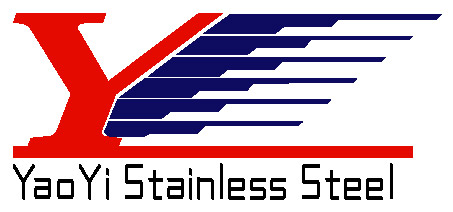Stainless steel is a general term for alloy steels that are resistant to corrosion by the atmosphere, acids, alkalis, and salts. The term “stainless” as used generally refers to its corrosion resistance. Why stainless steel will not rust, you can see the connection in this article: Why does stainless steel not rust? Stainless steel is divided into three types according to its microstructure: martensitic stainless steel, ferritic stainless steel, austenitic stainless steel and duplex stainless steel. Among them, martensitic stainless steel, austenitic stainless steel and ferritic stainless steel are the most widely used.
What is martensitic stainless steel?
Martensite is a metastable phase transformed into austenite by a non-diffusion phase transition, which has ferromagnetism and hardness and strength. The simple point is to take a magnet to experiment. If it has magnetic force, it is mostly martensitic stainless steel. Typical martensitic stainless steels are S41000, S40300, S41600 and S43000, which are commonly known as 400 series stainless steel. S41000 (1Cr13) steel processing technology is good, deep drawing, bending, crimping and welding without preheating; 2Crl3 does not require preheating before cold deformation, but preheating before welding. 1Crl3, 2Cr13 are mainly used to make corrosion-resistant structural parts, such as steam turbine blades, etc., while 3Cr13 and 4Cr13 are mainly used to make medical surgical scalpels and wear-resistant parts. 9Crl8 can be used as corrosion-resistant bearings and tools. High strength and hardness are one of the main characteristics of martensite in steel.
What is ferritic stainless steel?
Ferrite refers to a solid solution of a body-centered cubic lattice structure formed by iron and other elements. Ferritic stainless steel refers to the interstitial solid solution of chromium in alpha iron containing more than 12% of the total 183th HEBEI YEJIN. It also contains relatively low carbon and ferrite forming elements, such as Al, Mo, etc., to ensure that the steel is mainly ferrite, which has strong magnetic properties and cannot be hardened by quenching. It has strong oxidation resistance and it also has good hot workability and certain cold workability. Ferritic stainless steel is mainly used for the manufacture of components with high corrosion resistance and low strength requirements. It is widely used in the manufacture of equipment for the production of nitric acid, nitrogen fertilizer and chemicals. Typical ferritic stainless steels are Crl7, Cr25 and Cr28. Ferritic stainless steel has been widely used in kitchen equipment, household appliances, building decoration, transportation, environmental protection, municipal construction and other fields that are closely related to people’s lives. In automobiles and kitchen equipment, its output and consumption are also More than the trend of chrome-nickel austenitic stainless steel.
What is austenitic stainless steel?
Austenitic stainless steel refers to stainless steel having an austenite structure at normal temperature. The main feature of austenitic stainless steel is that it has a non-magnetic austenitic structure at room temperature. The steel has a low yield ratio, good plasticity, good weldability, easy smelting and hot forging and forging; austenitic stainless steel not only has good The corrosion resistance, as well as good mechanical properties and process properties, have been widely used in mechanical equipment. The 300 series and 200 series stainless steels that are commonly used are austenitic stainless steels, which are widely used in stainless steel cups, elevators, fasteners, doors and windows, sinks, etc., which are closely related to people’s daily lives. Single-phase austenitic stainless steels have good cold deformation properties and can be cold drawn into very thin steel wires and cold rolled into very thin steel strips or steel pipes. After a large amount of deformation, the strength of the steel is greatly improved. After the austenitic stainless steel is deformed and strengthened, it can be used to manufacture stainless steel springs, clockwork springs, wire ropes in aviation structures, and the like. If welding is required after deformation, only the spot welding process can be used, and the deformation increases the stress corrosion tendency. The following is the flow of austenitic stainless steel production.
